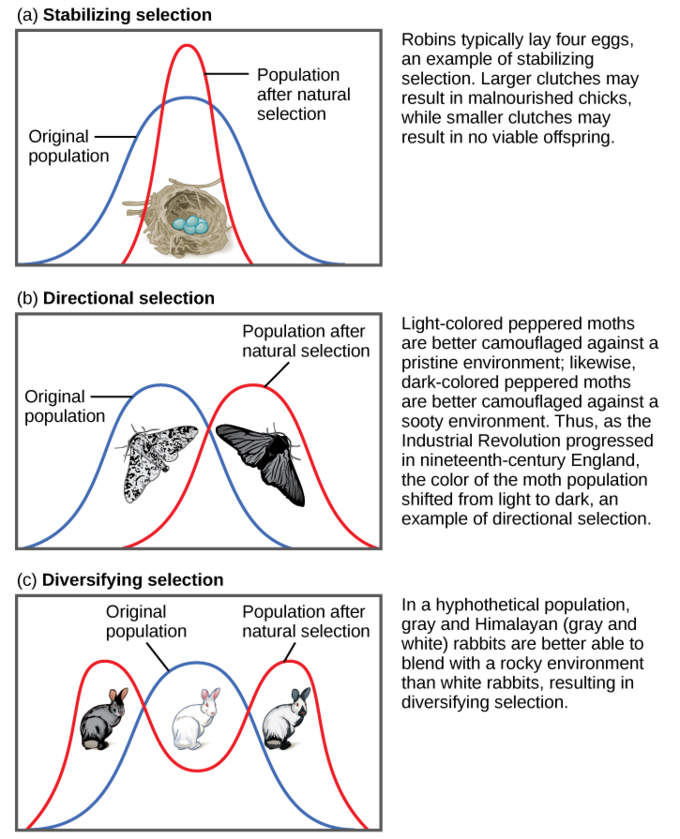Explain Why Individuals in a Population Have Different Observable Traits
Accumulate in the population. Vary in their heritable.

Characteristics And Traits Biology For Majors I
For genes carried on our human.

. In an individual one form of the allele the dominant one may be expressed more than another form the recessive one. The genetic contribution to the phenotype is called the genotype. DNA typing DNA fingerprinting analyzes genetic polymorphisms at multiple genes with multiple alleles.
These different characteristics of a gene that are produced by its alleles are collectively known as a variation. The dominantgene masks the effect of the recessivegene for the trait. Because there are so many.
C the greatest number of offspring. Any change in the gene sequence can change the phenotype expressed in inherited alleles. Explain why individuals in a population have different observable traits.
Individuals that are well suited. A gene is a portion of a chromosome. Since the patterns of dispersion of organisms in nature are different population density is also.
For each trait there is a dominant form and a recessive form. Individuals in a population. B characteristics that plant and animal breeders value.
Recall that traits are observable characteristics of an individual. Use your observation skills to find two examples of traits that you have inherited. 152 Human genetic variation can be detected by DNA typing which can uniquely identify each individual.
An allele or allel is one of a number of alternative forms of the same gene or same genetic locus. These traits must be. Different alleles produce variation in inherited characteristics such as hair color or blood type.
Thus the variation and distribution of traits observed depends on both genetic and environmental factors. According to Darwins theory of natural selection the individuals that tend to survive are those that have A characteristics their parents acquired by use and disuse. Density may be numerical density number of individuals per unit area or volume when the size of individuals in the population is relatively uniform as mammals birds or insects or biomass density biomass per unit area or volume when the size of individuals is variable such as trees.
All populations have ability to grow exponentially 2. Populations do not grow exponentially due to selective agents determined by the environment 3. To their environment tend to leave.
Some traits are largely determined by the genotype while other traits are largely determined by environmental factors. Variation exists within a population random 4. A chromosome is composed of DNA and contains the genetic material for an organism.
While the observable traits that are produced by a genotype is known as the phenotype eg a Bb individual exhibiting the dominant brown eye trait. 1 Explain why a single organism cannot have one of every allele from its gene pool. According to the definition of consumer behavior how a consumer disposes of an idea and accepts another is NOT part of consumer behavior.
When a transaction occurs between two or more organizations or people who give and receive something of value an exchange has taken place. These changes may be the result of DNA mutations. Different Genotypes are observed by varying phenotypes in a population What are bison traits.
An organisms phenotype is all of its observable characteristics which are influenced both by its genotype and by the environment. Mutations are changes in the gene sequences on DNA. In nature the influence of the environment forms the basis.
One of 20 different kinds of small molecules that link together in long chains to form proteins. An organisms genotype is the set of genes that it carries. Environmental factors also affect expression of traits and hence affect the probability of occurrences of traits in a population.
Traits are determined by an individuals genotype the summation of the genes in our DNA. The set of alleles that an individual inherits for a given gene is known as the genotype eg inheriting both brown and blue eye pigments gives a genotype of Bb. Some examples given in this lesson were tongue rolling earlobe shape and the presence or absence of a widows peak.
Genetic variation can influence the phenotypes seen in a population. Genetic variation is the presence of differences in sequences of genes between individual organisms of a species. So in defining evolution we are really concerned with changes in the genotypes that make up a population from generation to generation.
For each trait listed in Table 1 you get one gene from your mother and one gene from your father. Different environments can influence the development of inherited traits as size for example is affected by available food supply and alter expression by similar genotypes for example twins maturing in dissimilar families. They either have an inherited traits or learned traits.
Genetic variation describes the gene changes of organisms in a population. D variations best suited to environmental conditions. Sometimes different alleles can result in different observable phenotypic traits such as.
The variation must be heritable natural selection only works on heritable traits positive correlation between parents and offspring. Humans have twenty-three pairs of chromosomes. The main difference between allele and trait is that an allele is an alternative form of a particular gene whereas a trait is.
Buyer Behavior CH01 51-75. More offspring than other individuals. Over time favorable traits.
A variable number tandem repeat VNTR results from differences in the number of small-sequence repeats in a given area of the genome. Traits are controlled by factors called genes. It enables natural selection one of the primary forces driving the evolution of life.
A phenotype is an individuals observable traits such as height eye color and blood type.

Adaptive Evolution Boundless Biology

An Organism Has Two Different Possible Traits A And B A Graph Of The Population Is Shown Right Brainly Com
No comments for "Explain Why Individuals in a Population Have Different Observable Traits"
Post a Comment